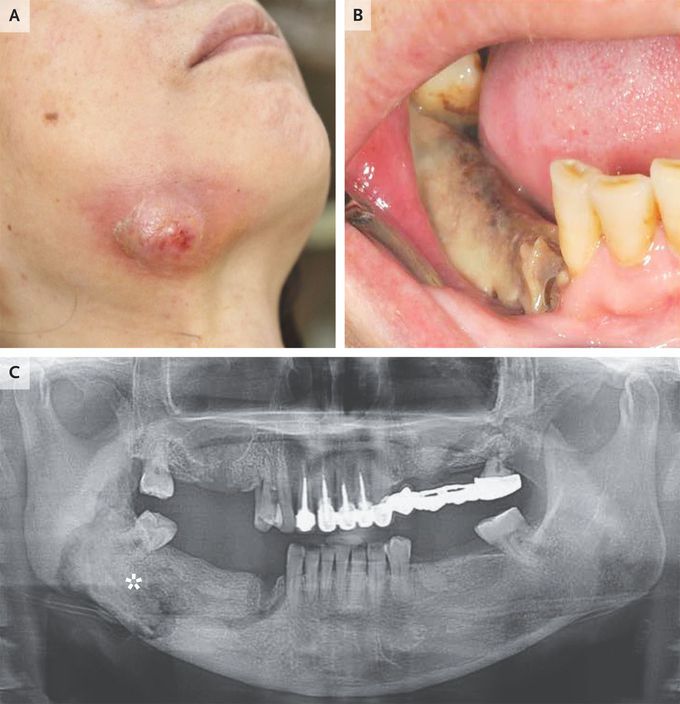


Medication-Related Osteonecrosis of the Jaw
A 54-year-old woman with metastatic breast cancer presented to the oral surgery clinic with a 4-month history of right jaw pain. For the past 10 months, she had been receiving denosumab at a dose of 120 mg every 4 weeks to prevent complications related to bony metastases. Physical examination was notable for swelling over the right jaw from an oral cutaneous fistula that connected to the mandible (Panel A). An area of exposed, necrotic bone was seen inside the mouth in an edentulous region of the right mandible (Panel B). She had several missing teeth and periodontitis. A panoramic radiograph showed an ill-defined radiolucent border with sequestrum over the right mandible (asterisk, Panel C). A diagnosis of medication-related osteonecrosis of the jaw complicated by secondary infection with extraoral fistula formation was made. Medication-related osteonecrosis of the jaw is an uncommon but severe complication of treatment with osteoclast inhibitors, such as denosumab and bisphosphonates. Risk factors include oral surgery, poor oral hygiene, and dental disease. It does not commonly occur with the use of antiresorptive medications at lower doses for conditions such as osteoporosis. The patient underwent surgical débridement and sequestrectomy, during which time treatment with denosumab was discontinued, and antimicrobials and oral rinses were administered. Denosumab therapy was resumed, and at the 1-year follow-up, her symptoms had resolved.

